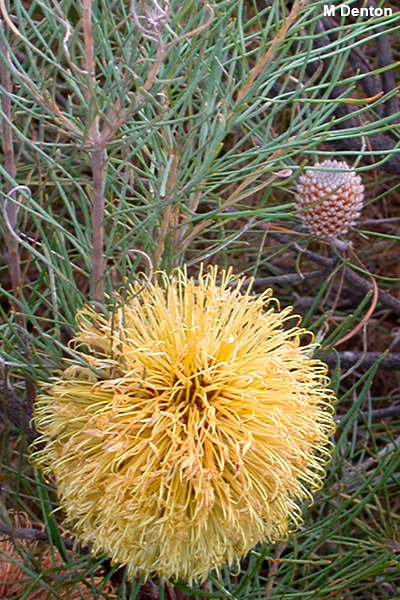General Description:
Previously known as Banksia sphaerocarpa var. pinifolia, the slender-leaved banksia is now recognised as a distinct species.
Two subspecies of Banksia leptophylla are recognised (these can be difficult for the non-botanist to tell apart unless they are viewed side by side):
- var. leptophylla, a vigorous upright shrub to 2 metres (occasionally bigger), found inland and flowering in summer.
- var. melletica, a shrub to 1 metre or so, occurring within 30 km of the coast and flowering in winter. Inflorescences and seed pods are generally smaller, and may have larger more obvious white spots indicating non pollinated flowers. Leaves are less upright and shorter for this variety.
B.leptophylla is so named for its fine foliage – the linear leaves are green and measure 40 to 100 mm long by 1 to 1.5 mm wide. The spherical to ovoid inflorescences are 7-12 cm wide and occur on short lateral branchlets and are pale to medium yellow or pale brown in colour, sometimes with purplish styles. The seeds are enclosed in follicles attached to a woody cone and are generally retained within the cone until burnt.
Both subspecies are fire-sensitive; they rely solely on seed for regeneration after bushfires.
B.leptophylla is rarely cultivated but both subspecies should require a Mediterranean climate (i.e. wet winter, dry summer) and sandy soil to do well. In common with other western banksias, the species is likely to be difficult to establish in areas with humid summers.
Propagation from seed is relatively easy.

Banksia leptophylla
Photo: Matt Denton
 Australian Native Plants Society (Australia)
Australian Native Plants Society (Australia)













